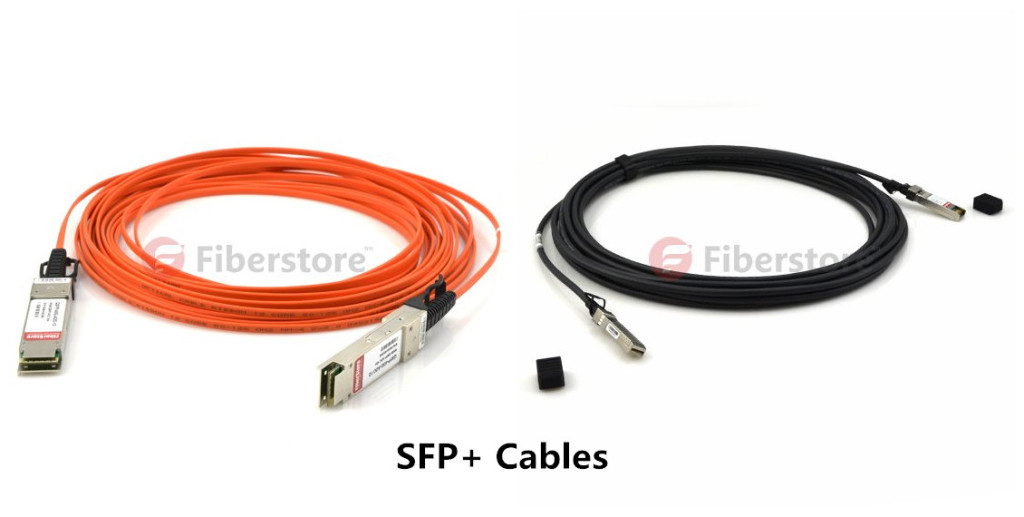What You Should Know About SFP+ Cables
As the development of computer science technology, 10 Gigabit Ethernet is widely used in our daily life. 10 Gigabit Ethernet means a group of computer networking technologies for transmitting Ethernet frames at a rate of 10 gigabytes per second. Like previous versions of Ethernet, 10GbE can use either copper or fiber cable. However, it requires higher bandwidth. So SFP+ cables are developed. SFP+ cables can provide high performance in 10 Gigabit Ethernet (10GbE) network applications and send 10Gbps data through one paired transmitters and receivers over a thin twinax cable.
Types of SFP+ Cables
Now there are many types of SFP+ cables available for use including the SFP+ direct attach cables, SFP+ active optical cables, SFP+ passive copper cables and SFP+ loopback cables.
SFP+ Direct Attach Cable
SFP+ direct attach cable is expected to be the optimum solution for 10G Ethernet reaches up to 10 meters. SFP+ direct attach cable applies a passive twin-ax cable assembly that connects directly into an SFP+ housing. It has a distance limitation of 10 meters and low power, low cost and low latency but more flexible. With inexpensive copper twinaxial cable and SFP+ connectors on both sides, SFP+ direct attach cable provides 10 Gigabit Ethernet connectivity between devices with SFP+ interfaces.
SFP+ Active Optical Cable
SFP+ active optical cable can support single channel and high speed data link applications. This kind of cable is able to transmit data at rates up to 10Gb/s and supports single transmission over distances from 1 to 100 meters with its full duplex construction. It is fully compatible with fiber channel, Ethernet, FCoE. SFP+ active optical cable, not like copper based cables, it requires more cable lengths to reduce cable bulk and weight. SFP+ active optical cable is a cost-effective interconnect solution with advantages like enhanced signal integrity, longer cable lengths, management interface, and high speed.
SFP+ Passive Copper Cable
SFP+ passive copper cables are a high performance connectivity solution supporting 10Gb Ethernet and Fibre Channel applications. Compared with SFP+ active optical cable, it has the benefits like lower costs, higher reliability and fewer components (No Active Tx/Rx Components). But it has limited management interface and requires the host to do the work of driving it properly.
Advantages of SFP+ cables
Through the brief introductions for the three types of SFP+ cables, it's obvious that SFP+ cables have a lot of advantages. First, SFP+ cables are interchangeable or hot-swappable. That means when devices do not work prematurely, you don't have to completely shut down the system to replace the device. It has high flexibility. Second, it's compatible with other protocols such as Ethernet, SONET/SDH/OTN, fiber channel, and PON standards. This maintains the speed and integrity of signals when transmitting long distances. Third, that SFP+ cable is not too much expensive makes it more and more popular.
